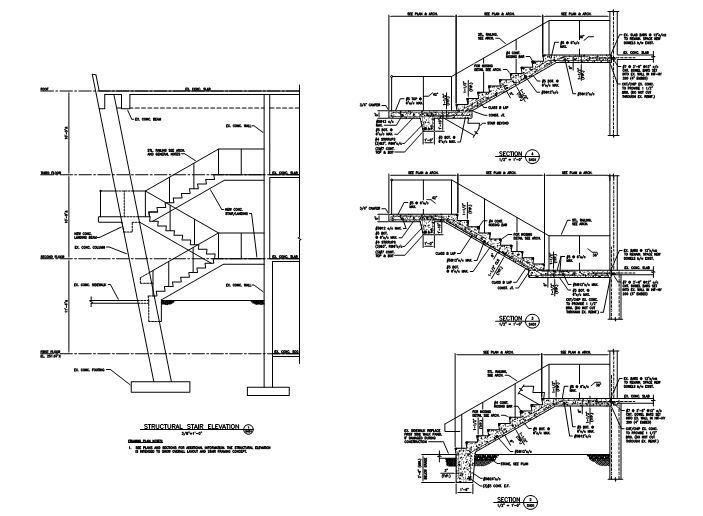I'm working on a concrete framed stair. It is open on the exterior long side, so I've designed the stair to span the long direction between the exterior wall of the building and an intermediate landing beam (stringer and landings together make up the span). I know there are going to be construction joints and am planning calling for the stair to be poured in (3) L's with all three landings being pour continuous each integral with one of the connecting stringers.
Another engineer in my office liked the idea of the stringer to landing joints being horizontal so that the stringer sits on top of the landings below (see attached PDF). What kind of gets away from me in this detail is what to do with the shear. If the cold joint were vertical right where the stringer meets the landing I could easily comprehend what to do with the shear and design for shear-friction transfer. It looks better to me as a horizontal joint and their is more contact between surfaces, but I don't really know how to design the shear interface (Its kind of like having a horizontal joint in a beam). I think their may be a way to analyze this condition by transposing forces at angles, but this seems like a common condition so I'd like to get a consensus on best method for detailing/designing/locating the joint.
As a side note, the stair is replacing an existing semi-exposed exterior stair at the corner of a building that has aged/deteriorated to the point that it's a constant maintenance concern (Its 46 years old). I plan on using 4.5 ksi mix, 1-1/2 cover and penetrating sealer to mitigate corrosion/moisture damage.
Another engineer in my office liked the idea of the stringer to landing joints being horizontal so that the stringer sits on top of the landings below (see attached PDF). What kind of gets away from me in this detail is what to do with the shear. If the cold joint were vertical right where the stringer meets the landing I could easily comprehend what to do with the shear and design for shear-friction transfer. It looks better to me as a horizontal joint and their is more contact between surfaces, but I don't really know how to design the shear interface (Its kind of like having a horizontal joint in a beam). I think their may be a way to analyze this condition by transposing forces at angles, but this seems like a common condition so I'd like to get a consensus on best method for detailing/designing/locating the joint.
As a side note, the stair is replacing an existing semi-exposed exterior stair at the corner of a building that has aged/deteriorated to the point that it's a constant maintenance concern (Its 46 years old). I plan on using 4.5 ksi mix, 1-1/2 cover and penetrating sealer to mitigate corrosion/moisture damage.


